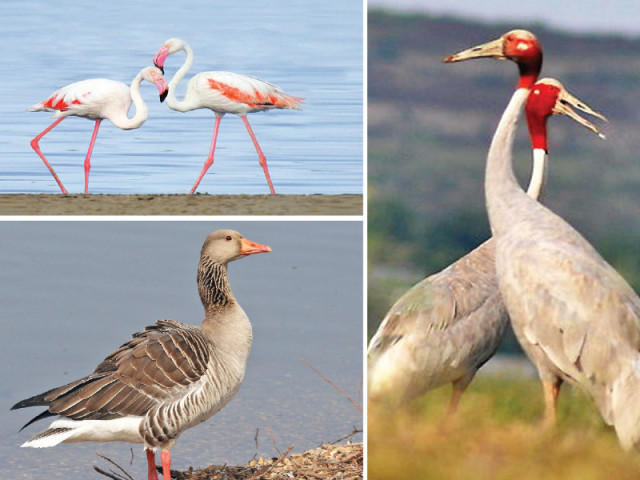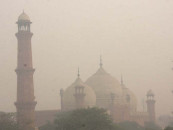Bird migration declines amid wetland drying
Punjab hosts approximately 700 species of water fowl

The number of migratory birds visiting Punjab is declining each year, driven by the combined effects of climate change, water scarcity in wetlands, and rampant hunting.
Punjab hosts approximately 700 species of water birds, of which 380 are migratory species that journey to the country annually. These guest birds make various water bodies across the nation their temporary homes, but their numbers are dwindling.
Punjab is home to around 250 water bodies, 19 of which are recognised as Ramsar siteswetlands of international importance.
These Ramsar sites provide crucial habitats for over 20,000 resident birds at any given time. Among the migratory birds visiting Punjab are species such as cranes, falcons, sparrow hawks, geese, flamingos, and various ducks.
These birds primarily originate from Russia, Siberia, China, and other Central Asian countries, seeking the more temperate climate of Punjab during the winter months.
The migration season begins in October, with birds arriving in search of food and a hospitable environment.
They remain in the country until March before returning to their native lands.
In Punjab, these birds can be found at various headworks, including Head Balloki, Khanki, Sidhnai, Sulaimanki, Qadirabad, and Hedmarala, as well as numerous lakes.
Their presence not only enhances the natural beauty of these areas but also contributes to the ecological diversity.
Unfortunately, the number of these migratory birds is decreasing, with climate change, drying wetlands, and unchecked hunting being the primary culprits.
The International Union for Conservation of Nature's Red List highlights that the population of 5,412 bird species (49%) worldwide has declined over the past 30 years.
In contrast, only 659 species (6%) have seen population growth.
BirdLife International reports that 223 species, or one in eight, are now endangered.
The decline in wildlife populations, including birds, has far-reaching implications for the planet's ecological balance.
Wildlife, including animals, birds, aquatic creatures, and insects, plays a crucial role in maintaining the earth's environmental health.
Punjab Wildlife Department Assistant Director Asim Kamran emphasised the importance of preserving natural habitats for wildlife.
He explained that forests and other natural ecosystems are the true homes of wildlife, and disrupting these environments by activities such as deforestation or agricultural expansion can have devastating effects on ecosystems.
He said pointed out that as wildlife populations dwindle, the quality of human environments also deteriorates. Kamran highlighted the efforts of the Punjab government to protect wildlife through advanced technologies like drone thermal imaging.
Kamran also stressed the need for public awareness to combat illegal hunting and trapping. He mentioned that the Wildlife Department is actively conducting operations against poachers and illegal hunters.
Recently, a significant operation led by Punjab Wildlife and Parks Director General Mudassir Riaz Malik, resulted in the arrest of a group of river turtle poachers who were smuggling the turtles to China.
The illegal hunting of migratory birds also threatens local bird species, particularly in urban areas.
Kamran reiterated that the illegal possession of wild animals and birds is a serious offense, and the Wildlife Department prioritizes the conservation of all wildlife. Protected species in Punjab include the black bear, monkey, leopard, deer, fox, crane, pheasant, quail, eagle, sparrow hawk, dove, bustard, vulture, heron, pelican and green parrot.
Legal action will be taken against anyone found illegally keeping these animals or birds.



















COMMENTS
Comments are moderated and generally will be posted if they are on-topic and not abusive.
For more information, please see our Comments FAQ